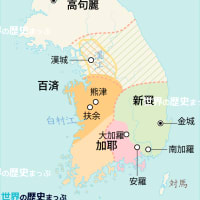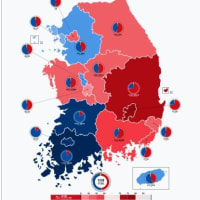While the Fed appears hell-bent on continuing to raise rates to avoid inflation, it would seem the yen carry trade into US dollar assets is intact. If anything, over sixteen Fed rate hikes it has no doubt expanded. But the US economy appears to be slowing, and the belief is that it will continue to slow. The Fed is fighting inflation for now and is prepared to deal with that problem while leaving the US economy problem for another day. However, the market assumes that Fed tightening must eventually stop.
When it stops, it will likely be due to core inflation not being as rampant as the hawkish Bernanke is anticipating. Many economists shrug off hyperinflation fears as misplaced. But then attention will turn to a sluggish US economy, and the next move in rates will be down. That will trigger (4) and (6). In theory, credit should not tighten in the US if rates are falling, but Shedlock throws up the potential scenario of a falling housing market, subsequent defaults, and a refusal by mortgage lenders to shift rates down as a protection against more failures.
Thus we would achieve Shedlock's "nightmare scenario" and perhaps LaRouche's collapse of the whole floating exchange rate system.
Or is that being overly hysterical?
LaRouche added to his statement with "Let it happen. The system is doomed under any circumstances, and we know what must be done to create a new, stable financial system, based on the principles of Franklin Roosevelt's original Bretton Woods System. I am ready with a recipe for precisely how to solve this crisis. Are you?"
Doesn't sound like Lyndon's made too much money lately, or is he simply nostalgic?
Stephen Roach, chief economist at Morgan Stanley, has weighed into the argument: "The lure of the carry trade is so compelling, it creates artificial demand for 'carryable' assets that has the potential to turn normal asset price appreciation into bubble-like proportions. History tells us that carry trades end when central bank tightening cycle begins."
As possibly the greatest financial bear of our time, Roach's comments must be taken in context, but his point is clear and evidential: we have experienced asset bubbles, and the carry trade must end when tightening begins. It has begun.
Which brings us to an obvious point. Is the correction we have been witnessing actually a manifestation of carry trade unwinding already? We have experienced blow-off tops in base metals, gold, and world stock markets. While there are bears roaming the woods there is still a general feel that this is simply a healthy correction in a long running bull market. The feeling is also, however, that it has further to run yet.
Let's look at some realities. The first obvious bale out asset is US treasuries. This will affect a falling US dollar and a rising yen (to repay the loans). Firstly, Japan may be about to end ZIRP, but is it about to let its currency appreciate rapidly overnight after a decade in the economic wilderness? Unlikely. The great savers of the world, including Japan and China, have a lot of funds invested in US treasuries (hence the global imbalance problem). Is it in anyone's interest to thus let the US dollar collapse? An orderly fall seems more attractive.
Furthermore, a manic sell-off of US treasuries will mean the price of US treasuries will fall. This means their yield goes up. In the face of carry trade unwinding, this is a self-correcting mechanism.
Carry trade fear-mongers also predict the collapse of gold. This is counterintuitive. Gold has now fallen, in a hurry, from the highs it established earlier in the year (in a hurry). Most of the selling has been attributed to shaky longs getting out. It is eminently possible that carry traders were very much part of the sell-off. But if the US dollar falls, as the prediction goes, gold must rise. If the world's financial system is teetering investors turn to gold.
Triggers for the gold sell-off were obvious. Apart from running too hard too quickly, Fed talk of further rate hikes means support for the US dollar which is bearish for gold. Simultaneously, tensions between the US and Iran appeared to be easing. Again, gold is a haven in times of trouble. Is the war on terror over?
China has indicated that it would like to, carefully, shift its reserves away from just US dollar assets and into other currencies, and gold. Russia advocates the same policy. As the US dollar begins to weaken, this will be a common thread.
Now the commodity boom. Again we have experienced a correction. Again we have seen hot money depart in a hurry. Carry traders? Quite possibly. Is it the trickle that starts the flood?
Well that would only be the case if you dismiss China and India as fly-by-nighters. There is a very real demand for commodities and a very real lack of supply that is struggling to catch up. Wherever commodity prices fall they will be met eventually with demand coming the other way. Whether or not you subscribe to the super cycle thesis (and most resources analysts do) there is a floor under commodity prices.
Dan Norcini is a Texan commodity trader and blogger. Norcini makes another obvious point, one that plenty of analysts have made when concerns are raised about the US current account deficit. If everyone bales out of the US dollar, where will all the money go? A redistribution must occur, suggesting there cannot be a simultaneous meltdown of all known assets. This carry trade is a global phenomenon, not an isolated incident like that of Russian debt. The money must go somewhere. (Norcini likes the idea of gold and base metals).
The global financial system is in better shape than it was in 1998. For the first time in a decade, the economies of the US, Europe and Japan are growing in synch. There is strong growth in China, South East Asia, India and Japan. The Australian economy is growing. The US can slow, China can slow, others can slow but there is a long way to slow. Global recession does not appear at hand.
Hedge fund might have become a dirty word after LTCM but that has not stopped hedge funds growing exponentially. Hundreds of them. Enough of that risk is now spread around a great deal more. And if the yen carry trade ceases to be viable is that the end of it? The BOJ may have financed the world recently but it's not the only source of funds.
Mark Watts of Morley Fund Management believes the world will move into an era of greater differentiation of carry trades rather than all out reversal. "Fundamentals, as they are prone to do", says Watts, "snap back into focus eventually". There are a number of "pots of liquidity" that are less dependent on rising rates and will need to find a home. Watts cites the foreign exchange reserves of Asia and OPEC as examples, as well as one area that has been largely overlooked – simple corporate cash.
We are currently experiencing a period of great volatility in financial markets. Is it unprecedented? Absolutely nowhere near it. Present implied volatility in the Australian share price index futures is, for example, around 20%. Prior to the crash of '87 it was 30%, and after it was 100%. Some volatility jumps into the 40% area have been experienced since, but generally volatility has been on a long, slow decline over the decades. 20% is nothing, and yet the market has been bouncing around suggesting much higher levels. Implied volatility is the risk value ascribed by derivative traders to an asset. Clearly derivatives traders are not panicked.
The reasons implied volatility has declined are many, not the least of which is the evolution of sophisticated derivative markets and the know-how to trade them. A whole generation of hedge fund traders have hit the market since even 1998. The securitisation of assets has continued a-pace such that the universe of investment instruments is vastly wider than it was in that last great crash.
Some observers, of course, blame this very point. Too many hedge funds, too many speculators, too much to speculate on and not enough reality. But the capitalist market cannot be restricted. It would be like restricting the human brain. The diversification of assets only supports the diversification of risk. It also supports leverage, and that is very much part of the carry trade fear. It is leverage that provides for the rollercoaster ride, but leverage, too, is quelled by risk management techniques.
Lastly, in this world of rapid communication, in this global marketplace, is not information disseminated in virtual zero time? For months there has been speculation of the end of ZIRP. Has the world sat on its hands, closed its eyes, and hoped it will go away? I doubt it. Talk of the yen carry trade has also been around for a long time. The correction we are experiencing may well be more about the unwinding of the carry trade than simple inflation fear. It is a chain reaction: inflation means interest rate rise means unwinding positions means end of bubbles. But is it the end of the world as we know it?
The yen carry trade will be around for some time yet, and it will have to come to an end. As to whether it comes to an abrupt, and devastating, end, is another case in point.
http://www.fnarena.com/index2.cfm?type=dsp_newsitem&n=D5FBD7FF-3048-5296-A29032E12D3BAEDB
When it stops, it will likely be due to core inflation not being as rampant as the hawkish Bernanke is anticipating. Many economists shrug off hyperinflation fears as misplaced. But then attention will turn to a sluggish US economy, and the next move in rates will be down. That will trigger (4) and (6). In theory, credit should not tighten in the US if rates are falling, but Shedlock throws up the potential scenario of a falling housing market, subsequent defaults, and a refusal by mortgage lenders to shift rates down as a protection against more failures.
Thus we would achieve Shedlock's "nightmare scenario" and perhaps LaRouche's collapse of the whole floating exchange rate system.
Or is that being overly hysterical?
LaRouche added to his statement with "Let it happen. The system is doomed under any circumstances, and we know what must be done to create a new, stable financial system, based on the principles of Franklin Roosevelt's original Bretton Woods System. I am ready with a recipe for precisely how to solve this crisis. Are you?"
Doesn't sound like Lyndon's made too much money lately, or is he simply nostalgic?
Stephen Roach, chief economist at Morgan Stanley, has weighed into the argument: "The lure of the carry trade is so compelling, it creates artificial demand for 'carryable' assets that has the potential to turn normal asset price appreciation into bubble-like proportions. History tells us that carry trades end when central bank tightening cycle begins."
As possibly the greatest financial bear of our time, Roach's comments must be taken in context, but his point is clear and evidential: we have experienced asset bubbles, and the carry trade must end when tightening begins. It has begun.
Which brings us to an obvious point. Is the correction we have been witnessing actually a manifestation of carry trade unwinding already? We have experienced blow-off tops in base metals, gold, and world stock markets. While there are bears roaming the woods there is still a general feel that this is simply a healthy correction in a long running bull market. The feeling is also, however, that it has further to run yet.
Let's look at some realities. The first obvious bale out asset is US treasuries. This will affect a falling US dollar and a rising yen (to repay the loans). Firstly, Japan may be about to end ZIRP, but is it about to let its currency appreciate rapidly overnight after a decade in the economic wilderness? Unlikely. The great savers of the world, including Japan and China, have a lot of funds invested in US treasuries (hence the global imbalance problem). Is it in anyone's interest to thus let the US dollar collapse? An orderly fall seems more attractive.
Furthermore, a manic sell-off of US treasuries will mean the price of US treasuries will fall. This means their yield goes up. In the face of carry trade unwinding, this is a self-correcting mechanism.
Carry trade fear-mongers also predict the collapse of gold. This is counterintuitive. Gold has now fallen, in a hurry, from the highs it established earlier in the year (in a hurry). Most of the selling has been attributed to shaky longs getting out. It is eminently possible that carry traders were very much part of the sell-off. But if the US dollar falls, as the prediction goes, gold must rise. If the world's financial system is teetering investors turn to gold.
Triggers for the gold sell-off were obvious. Apart from running too hard too quickly, Fed talk of further rate hikes means support for the US dollar which is bearish for gold. Simultaneously, tensions between the US and Iran appeared to be easing. Again, gold is a haven in times of trouble. Is the war on terror over?
China has indicated that it would like to, carefully, shift its reserves away from just US dollar assets and into other currencies, and gold. Russia advocates the same policy. As the US dollar begins to weaken, this will be a common thread.
Now the commodity boom. Again we have experienced a correction. Again we have seen hot money depart in a hurry. Carry traders? Quite possibly. Is it the trickle that starts the flood?
Well that would only be the case if you dismiss China and India as fly-by-nighters. There is a very real demand for commodities and a very real lack of supply that is struggling to catch up. Wherever commodity prices fall they will be met eventually with demand coming the other way. Whether or not you subscribe to the super cycle thesis (and most resources analysts do) there is a floor under commodity prices.
Dan Norcini is a Texan commodity trader and blogger. Norcini makes another obvious point, one that plenty of analysts have made when concerns are raised about the US current account deficit. If everyone bales out of the US dollar, where will all the money go? A redistribution must occur, suggesting there cannot be a simultaneous meltdown of all known assets. This carry trade is a global phenomenon, not an isolated incident like that of Russian debt. The money must go somewhere. (Norcini likes the idea of gold and base metals).
The global financial system is in better shape than it was in 1998. For the first time in a decade, the economies of the US, Europe and Japan are growing in synch. There is strong growth in China, South East Asia, India and Japan. The Australian economy is growing. The US can slow, China can slow, others can slow but there is a long way to slow. Global recession does not appear at hand.
Hedge fund might have become a dirty word after LTCM but that has not stopped hedge funds growing exponentially. Hundreds of them. Enough of that risk is now spread around a great deal more. And if the yen carry trade ceases to be viable is that the end of it? The BOJ may have financed the world recently but it's not the only source of funds.
Mark Watts of Morley Fund Management believes the world will move into an era of greater differentiation of carry trades rather than all out reversal. "Fundamentals, as they are prone to do", says Watts, "snap back into focus eventually". There are a number of "pots of liquidity" that are less dependent on rising rates and will need to find a home. Watts cites the foreign exchange reserves of Asia and OPEC as examples, as well as one area that has been largely overlooked – simple corporate cash.
We are currently experiencing a period of great volatility in financial markets. Is it unprecedented? Absolutely nowhere near it. Present implied volatility in the Australian share price index futures is, for example, around 20%. Prior to the crash of '87 it was 30%, and after it was 100%. Some volatility jumps into the 40% area have been experienced since, but generally volatility has been on a long, slow decline over the decades. 20% is nothing, and yet the market has been bouncing around suggesting much higher levels. Implied volatility is the risk value ascribed by derivative traders to an asset. Clearly derivatives traders are not panicked.
The reasons implied volatility has declined are many, not the least of which is the evolution of sophisticated derivative markets and the know-how to trade them. A whole generation of hedge fund traders have hit the market since even 1998. The securitisation of assets has continued a-pace such that the universe of investment instruments is vastly wider than it was in that last great crash.
Some observers, of course, blame this very point. Too many hedge funds, too many speculators, too much to speculate on and not enough reality. But the capitalist market cannot be restricted. It would be like restricting the human brain. The diversification of assets only supports the diversification of risk. It also supports leverage, and that is very much part of the carry trade fear. It is leverage that provides for the rollercoaster ride, but leverage, too, is quelled by risk management techniques.
Lastly, in this world of rapid communication, in this global marketplace, is not information disseminated in virtual zero time? For months there has been speculation of the end of ZIRP. Has the world sat on its hands, closed its eyes, and hoped it will go away? I doubt it. Talk of the yen carry trade has also been around for a long time. The correction we are experiencing may well be more about the unwinding of the carry trade than simple inflation fear. It is a chain reaction: inflation means interest rate rise means unwinding positions means end of bubbles. But is it the end of the world as we know it?
The yen carry trade will be around for some time yet, and it will have to come to an end. As to whether it comes to an abrupt, and devastating, end, is another case in point.
http://www.fnarena.com/index2.cfm?type=dsp_newsitem&n=D5FBD7FF-3048-5296-A29032E12D3BAEDB




























※コメント投稿者のブログIDはブログ作成者のみに通知されます